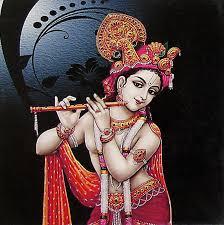
Just like day and night are true, so are dawn and dusk, the inhabitants of neither land.
Good- evil ; man- woman, boon- bane, day- night, heaven- earth, the thesis and the anti-thesis. The world seeks to secure order within the binary parameters that it has set for itself. What it forgets in its childlike enthusiasm to maintain the status quo that there is a world beyond binary. If there is night and day, there is also dawn and dusk too. Both are times of the day that is neither here nor there, yet an integral part of ‘prakrit’.(nature)
There are as many truths as there are perspectives. Truth is never autonomous and free. It needs the ground of a context to prove itself. Hence with the changing context, the truth too, changes. At a given time there may be as many contexts as there are actors in that truth. It is, therefore impossible to seek The Truth. Some truths are more predominant than others. What is my truth may not necessarily be yours. To reject, therefore, the truth which does not fit your sensibilities, is to become a victim of a half truth.
According to the Sankhya philosophy, Purush and Prakriti are the eternal truths that govern this world. Prakriti is the material cause of this universe, whereas, the Purush is the efficient cause of the universe. Both are viewed as having separate identity. While Prakriti is the life force and the nurturer,( female), Purush is the consciousness ( male). Prakriti is linked to the mind and the physical body with all its different parts and organs. The Purusha, on the other hand, is the pure, ego-free, divine Self, residing inside the body. The concepts are interdependent upon each other, for there can be no Purush without Prakriti and no order without Purush,. With the passage of time the concept was given a patriarchal overtones which led to the Prakriti being subservient to the Purush.
The sexual minorities are often termed as being in the “unnatural state of things” ( Aprakritik). The argumentators of sexual unnaturalness have repeatedly used religion and culture as their basis to crystallize and defend their views. Homosexuality ( and any other sexually “ deviant behaviour) is against the Hindu culture is a statement that has been abused by the advocates by conveniently relegating the constant reference to the alternate sexualities in a dark corner where many other such truths lie unseen and un-heard.
Hinduism perhaps is one of the most divinely populous religion in terms of sheer number of gods and goddess it has. Thirty three and a half million of them! Have we ever pondered why does this religion have superfluity of the divine forces? Everything in nature, be it the sun, the moon, the stars, the wind, and the rain, all have been bestowed with a divine force. Does it not indicted that everything that we see, and we ourselves are a manifestation of the divine? When everything that exists on earth is Prakriti, how can anything be aprakritik? A person contains within himself/ herself both the elements of Purush and Prakriti. Sometimes one dominates, sometimes the other. The balance of these two element is not rigid but rather fluid in nature. The gender may change from one to the next and even in the same birth. Many stories forming part of rainbow of sexual minorities can be cited in Hindu mythology. These stories are like lightning on a dark night. Lightning that demands your absolute and unwavering attention ; lightning that demands from you to hear the thunder that will follow. The thunder you have so conveniently ignored, even though it was always around you
Shikandi, a pivotal character in the battle of Mahabharata was born a female who borrowed a yaksha’s manliness to satisfy his wife. Being a woman and a man in the same birth, what should Shikhandi be slotted as? The story of two Brahamin priests and childhood best friends, Sumedha and Samvant, where Samvanti became a woman and later married his best friend. There are many more such stories where gender transformation takes place in the same birth. Looked from the lens of sexual minority, these mythological tales seek to secure a place for the LGBTQ community in the current social structure by regarding them as a part of nature. The discomfort exhibited about the sexual transformation is a modern phenomena in Hinduism. A study of the ancient Hindu religion reveals that such transformations were a willing acceptance by the person transformed.
The most revered incarnation of Vishnu, Krishan is regarded as the complete man ( purna purush). In all the images he is represented as wearing a nose ring, braided hair, hennaed palms and feet decorated with bright red colour. Krishan’s posture too that involves bending the body at the neck, waist and knee ( known as the tri-bhanga) usually adopted by the dancers, reflects his absolute comfort with the feminine side. Stories related to Krishna are full of incidences where he has cross-dressed, sometimes for his beloved Radha, sometimes to tease the gopikas. Even the most ascetic of gods, Shiv has an Ardhanareshwar ( half man- half woman ) roop. It is the androgynous form of Shiv that represents the synthesis of male and female energies. The Ardhnareswar roop is depicted as half male and half female bisected at the very middle. In this form, is Shiv a male or a female or both?
Other stories of ‘queerness” in Hindu mythology delink the sexual aspect from the “queerness” attributed to the person and become the question of self identity. Yuvaneshva, the king of Vallbhi during the time of Mahabharata, who became pregnant by accidently drinking the magic potion meant for his three wives is one such story. Yuvaneshva’s ability to be pregnant and deliver a child subsequently led to his struggle to be recognized as a mother and not a father by his son. The king also struggled with the questions of socoi- political nature. Being a mother does Yuvaneshva have the right to pass his thrown to his son since only men were allowed to rule and pass their inheritance to their sons?
Apart from the oral tradition and mythological stories, the sexual minorities also find a mention in the Kamasutra where they are referred as ‘ tritiya prakriti” or third nature. The acknowledgement of the LGBTQ community in a written text is in sharp contrast to the denial of their acceptance by the watch dog of Hindu religion in modern times.
Holding on to the only truth that we have experienced or is a part of our lives due to repeated retelling from a singular view, perpetuates the danger of a single story that portrays one perspective as the prescribed perspective, be it in the realm of gender relations , political economy or exploring and accommodating the sexual spectrum within the folds of the existing social structure.
Nature is fluid, like the ever flowing Ganga. Trying to define it rigidly on the principles of duality would lead to a social order where only that part of nature is accepted and sanctioned which forms the truth of our personal a social universe. The vocalization of the LGBTQ community for the recognition of their identity and identity should not be ignored . Ignoring an amplifying voice that needs to be heard does not only reek of arrogance about the exiting social fabric that works on the concept of exclusion, but it is also a significant deviation from the liberal society that we want India to be where all forms of diversities, including sexual diversities are not just tolerated but celebrated.








7d88.png?itok=KI18yp23)

Add new comment